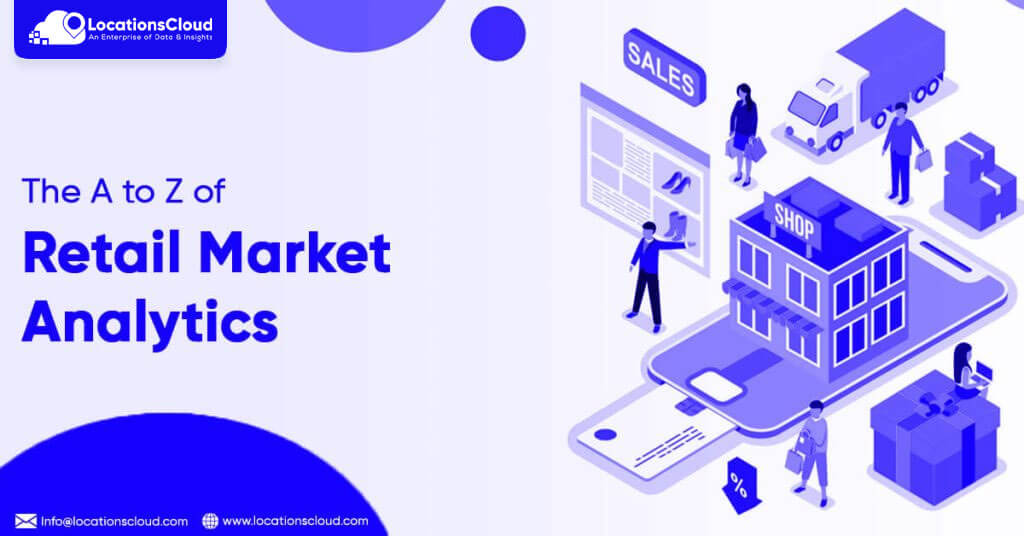
Data is critical in the world we live in today, and data is called “the oil of the 21st century” by experts. The economy of the world today depends on the information people give.
The fact that companies like Netflix leverage Big Data, and it is to save USD 1 billion annually.
This is an excellent example of the “data dominance” we are currently going through. By 2023, data will have affected almost every area of life. Data has a history unmatched by anything else, and it has everything from health and money to education and fun. But retail is one of the more strange places, and it is a place where data is fundamental but needs to be given more attention.
Any store that sells things needs data. It’s for people who want to make it through. They can keep going in a world with a lot of competition. Are you a retailer? The numbers in your business come from the number of people who walk through it. The money coming in and going out, as well as the level of inventory, should always be on the radar. It is a foolproof way to judge the health and competence of your business. But it would be a big mistake to say that “numbers” are the most crucial thing in any success story. It must be explained in a way that makes sense. It’s to learn something important. This is based on any measurable data, like where stores are located. When this is the case, retail market analytics come into play. What is it, and how can you use it to your advantage? Let us find out!
Retail Analytics: Top Five Reasons That Make Retail Analytics Crucial
Retail analytics is the name for the methods and processes that businesses use. It is to find, gather, and analyze data about retail. In every part of the retail business, analytics plays a key role. It goes from sales and marketing to managing inventory and running the business. In a nutshell, “numbers” are the key to retail analytics, and it’s about making the most of what they can do.
1. Better sales and marketing plans:
First, retail analytics gives you a complete picture of your business and its customers. Retailers can make a plan if they know how their customers act, and they can help improve strategies for selling and marketing.
2. Increased customer satisfaction:
Retail analytics helps get valuable information about customers’ feelings. It’s like asking why customers come back or why they don’t. It’s important to know why your customers are happy or unhappy. It helps make a better experience for the customer. It helps make customers more comfortable and keeps them around.
3. Optimization of operations:
Retail analytics can improve business operations and processes. For example, information about a store’s location can shed light on essential buyer demographics. It’s where the people you want to buy from life. It has to do with when they like to shop and other things. All of these things lead to better decisions. Foot traffic metrics show the highs and lows of your real-world store. Data can be used to improve work schedules and operations.
4. Keeping track of inventory:
It is the most expensive part of running a business, and many companies use it. Poor inventory management costs retailers a whopping USD 300 billion annually. Inventory mistakes can be avoided with the help of retail analytics that focus on stock, and it comes from causing trouble with cash flow and how customers feel about the business.
5. Waste Management:
Retail analytics ensures your business stays strong. It’s because resources could have been used better. The best way to use retail data can lead to better use of resources. So, you can spend more time, energy, and resources on something else. It’s for strategies, products, and projects. It helps growth more than the ones that spend all the money.
The Four Types of Retail Analytics: A Crisp Definition
- Prescriptive analytics: This helps retailers develop a plan based on the real-time data they can access.
- Predictive analytics: This is when data from the past is used to make predictions.
- With retail data, diagnostic analytics tries to determine why something has something.
- Descriptive analytics is looking at data after something has happened. For example, the opening of a store early in the year is the best time to use descriptive analysis.
We now know why it’s crucial to use retail analytics. We also know what kinds of analytical tools we can use. So, let’s look at a few ways to collect information. It can make it possible to analyze in the first place.
Types of In-store Data Gathering Methods:
One of the hardest things for brick-and-mortar stores to do is collect data. For online stores, it is much easier to extract and analyze data. But stores that sell things in person need to catch up in this area. But a few simple steps can make the process go more smoothly.
- Collecting information at the point of sale- A point-of-sale (POS) system gives you valuable information about your profit margins. It also tells about sales, the number of customers, trends, and more. The data can be used to plan purchases and keep track of stock.
- Foot Traffic helps you figure out how many people come into your store. You can also look at what they do inside. The data can help figure out the rate of conversion. You can find out when your store is busiest, what people buy, and more.
- Market Analysis: The best way to find trends is to look at the market over time. It can also keep track of how the business world changes. It helps you figure out how these changes will affect your business.
- Feedback forms and surveys are good ways to get valuable quantitative information. It can help your business make better decisions.
- Proximity marketing tools- Tools like beacons and geofencing can help with proximity marketing. It can find out where retail stores are. It makes the shopping experience better for customers.
Trends and Statistics on the State of Retail Analytics:
Some trends and facts about retail analytics that are interesting are:
- The global retail analytics industry is valued at USD 8.64 billion.
- Several studies show a fact as a whole. More than 90 percent of retail stores in various industries pay respect. It’s about data about places. Data about where retail shops are located affects how well a business does.
- The growth of the retail analytics industry worldwide has been excellent. It is expected to grow at a startling rate of 18 percent from 2019 to 2025.
- According to Gartner, there is a fact. By 2020, 90% of business plans will list “information” as one of their resources. It is for their company and will emphasize the need for analytics as a core skill.
Retail Analytics: The Foreseeable Future
Retail analytics and retail data have a bright future. Technology is getting better and better in the field. Omnichannel customer journeys are tracked by stores of all sizes. Shopify did a study that found that 53% of brands are putting money into tools. It can help them sell in any place. The analytics for retail will cover all channels. Enterprises can explore popular purchase routes.
Conclusion
Here is a summary of retail market analytics. We now know how important it is in this day and age. The analytics for retail will cover all channels. Businesses can look into where people usually buy things. It can help retailers find new ways to do business, like making decisions, taking care of customers, etc.


